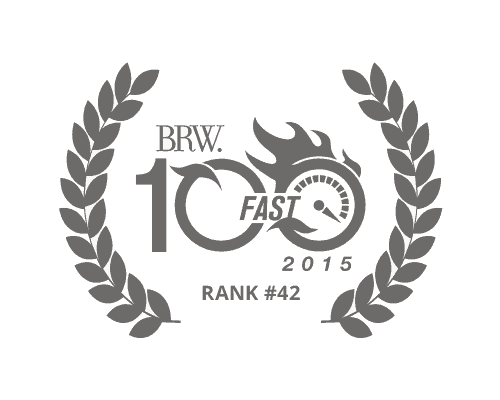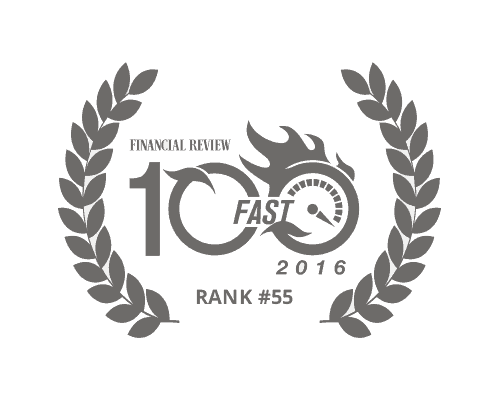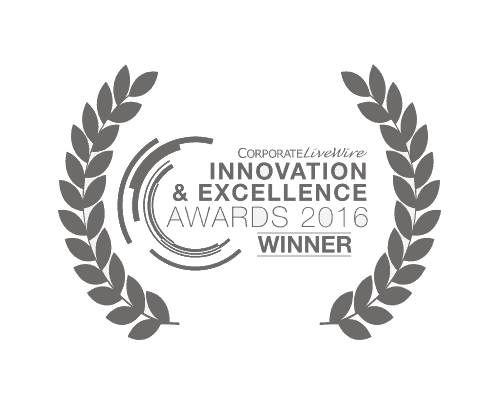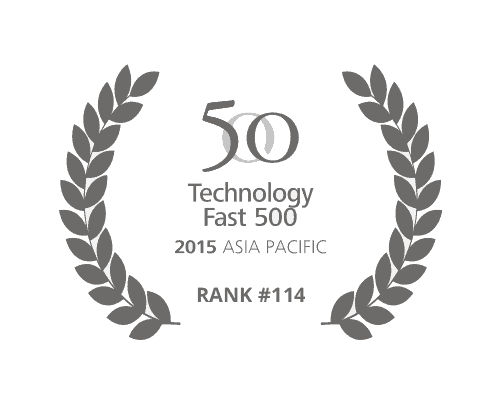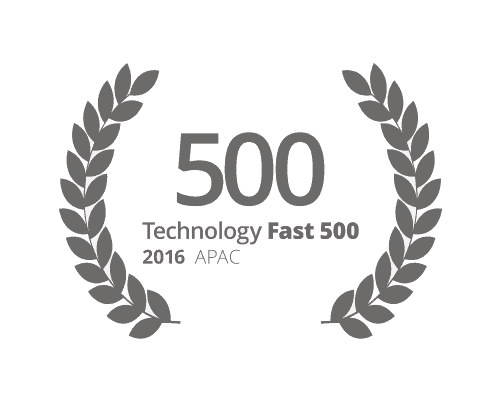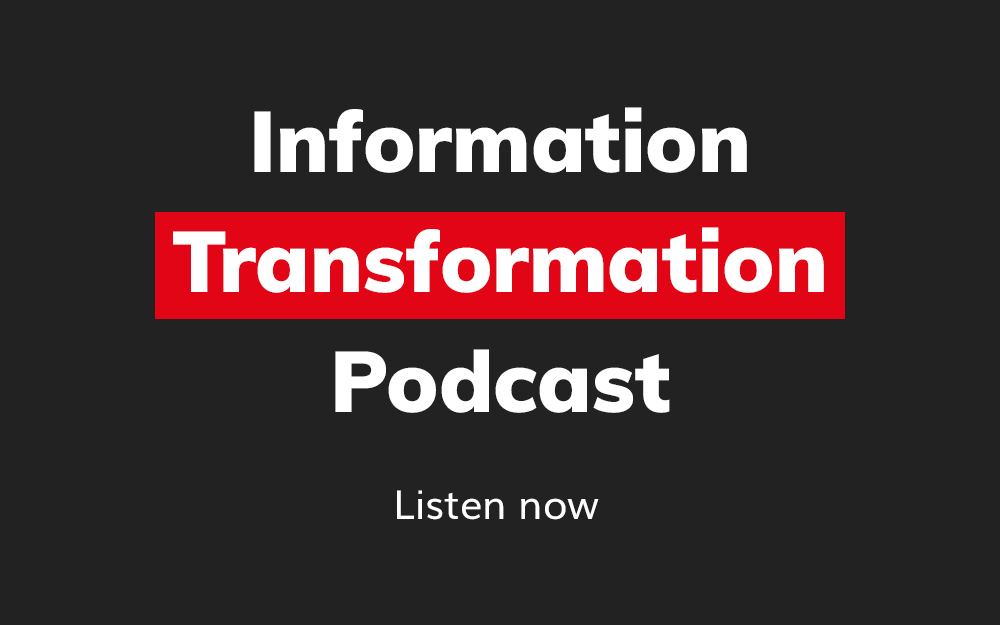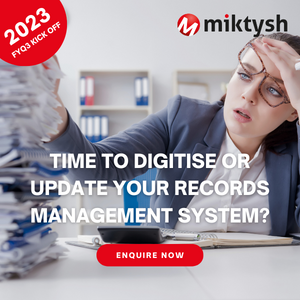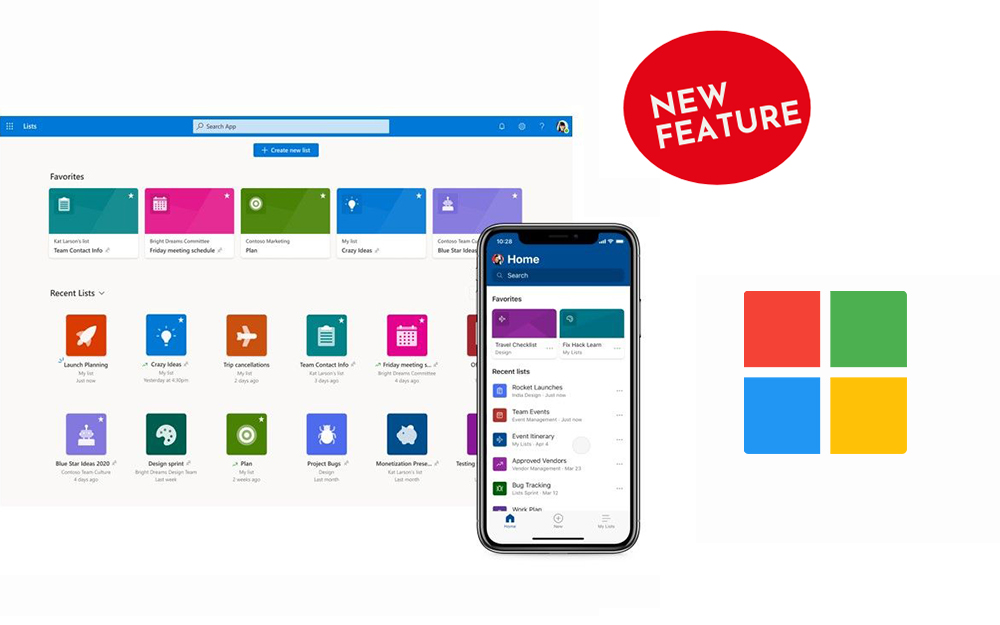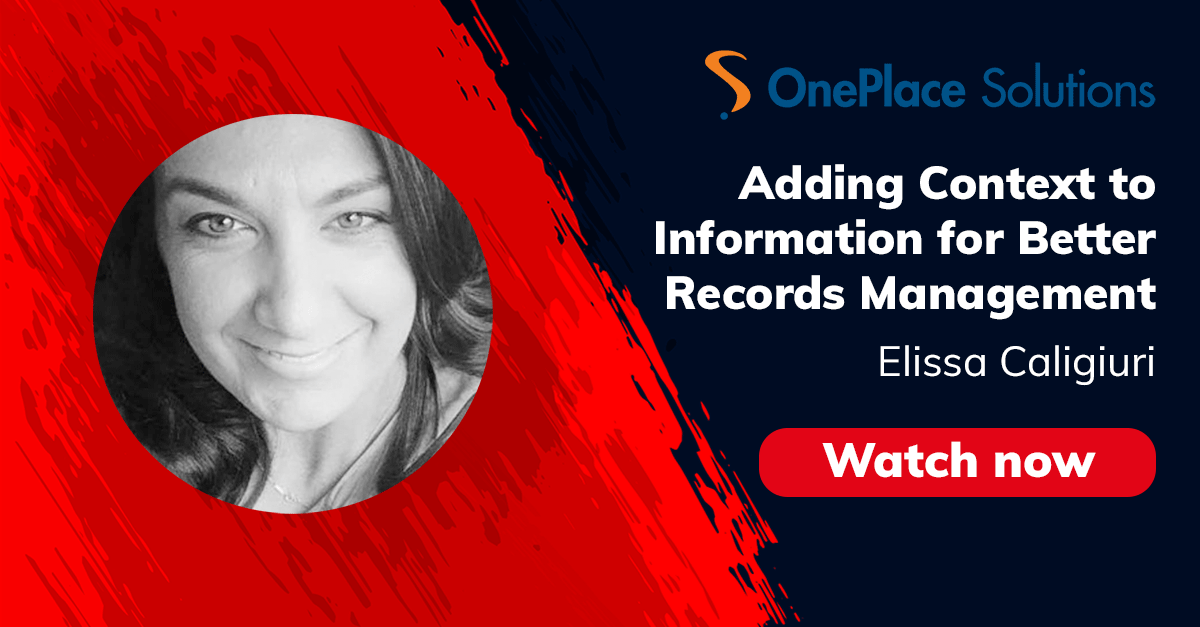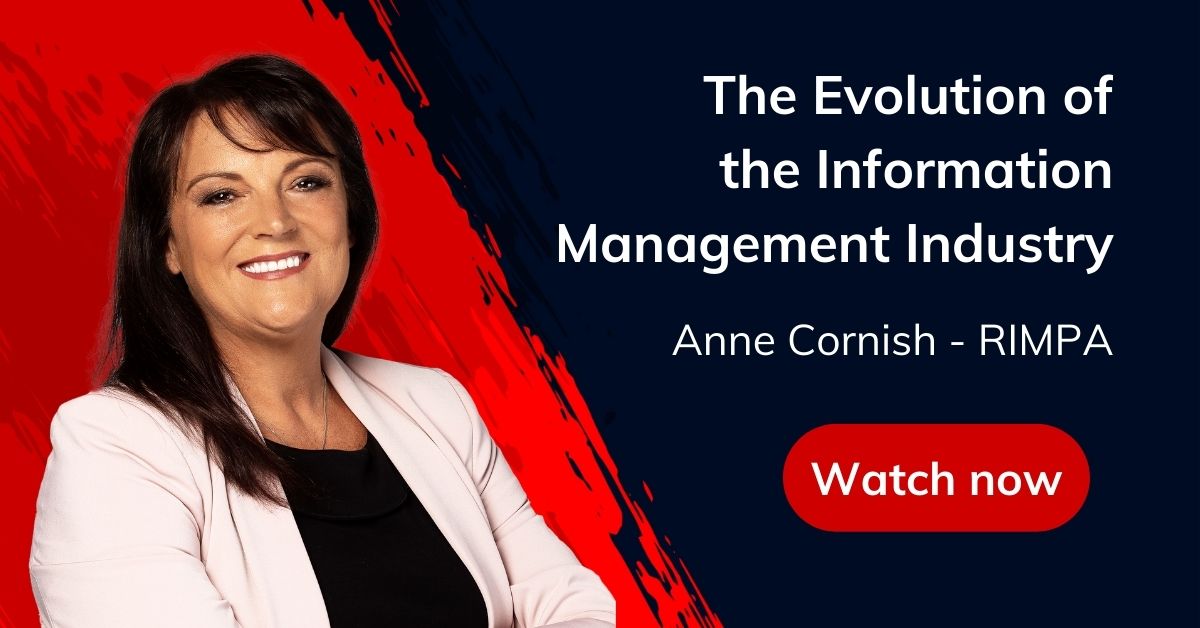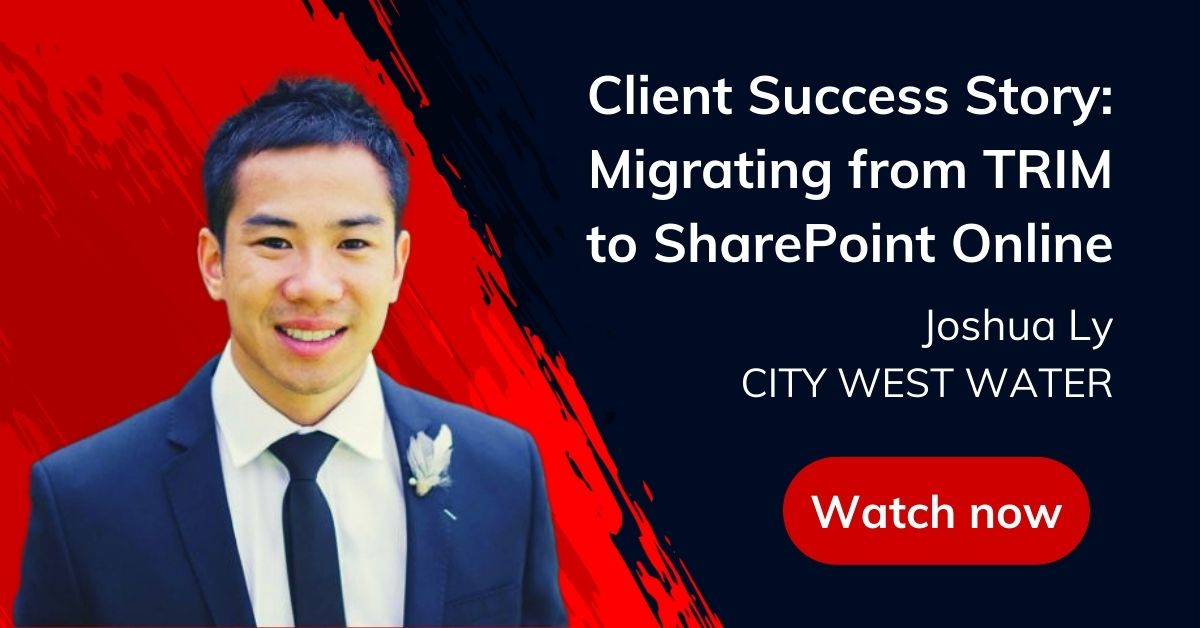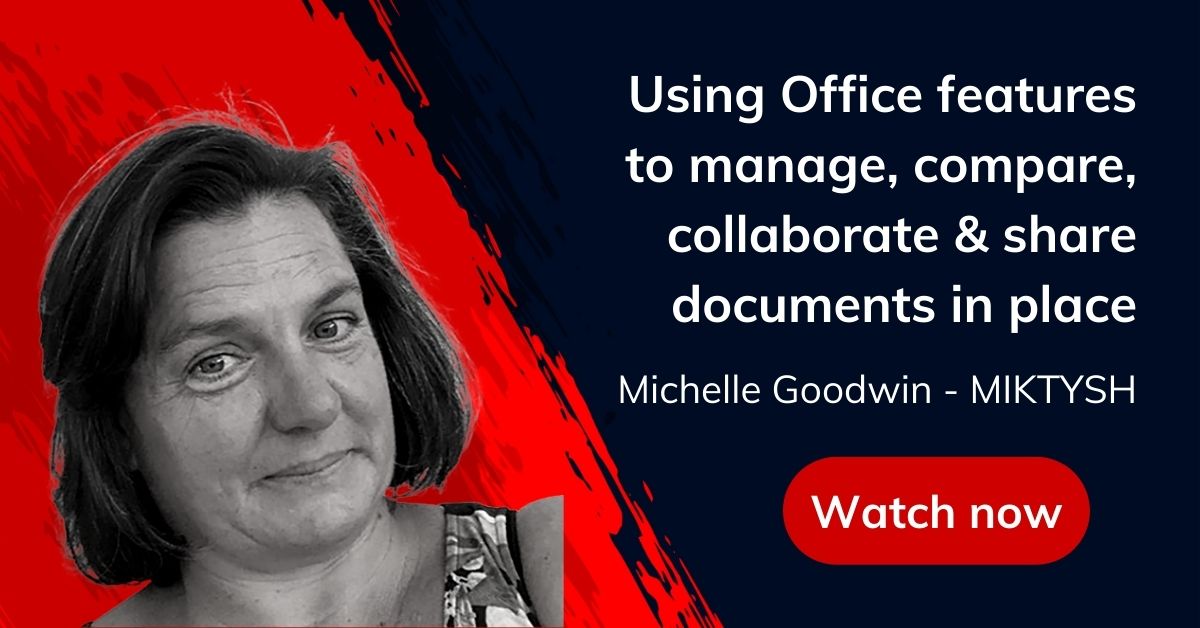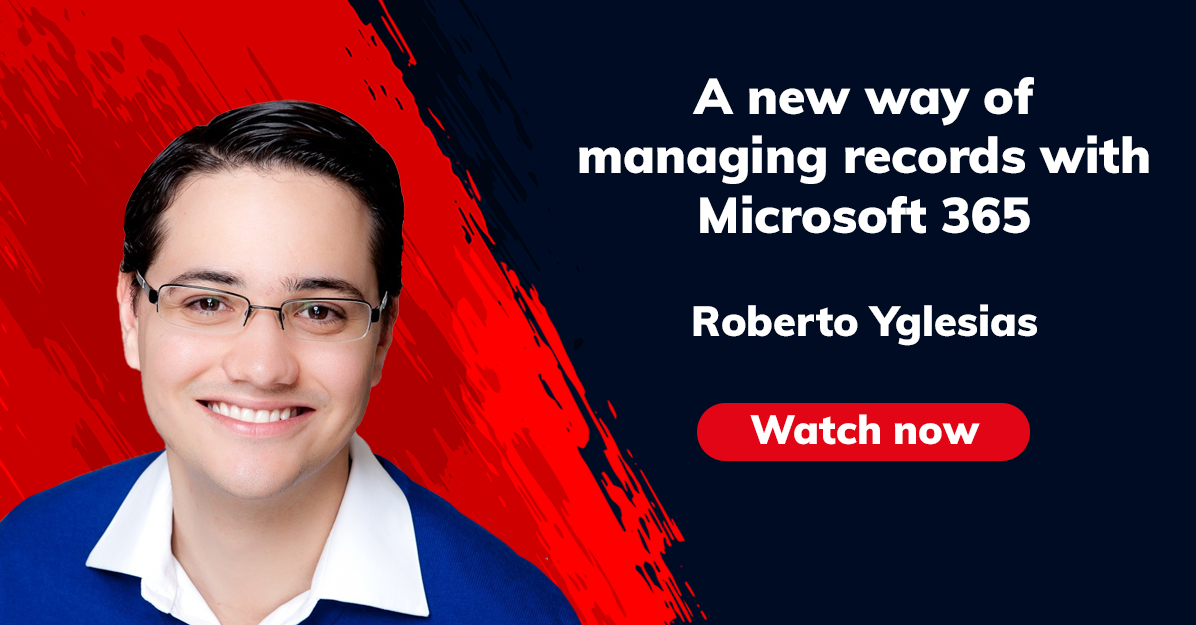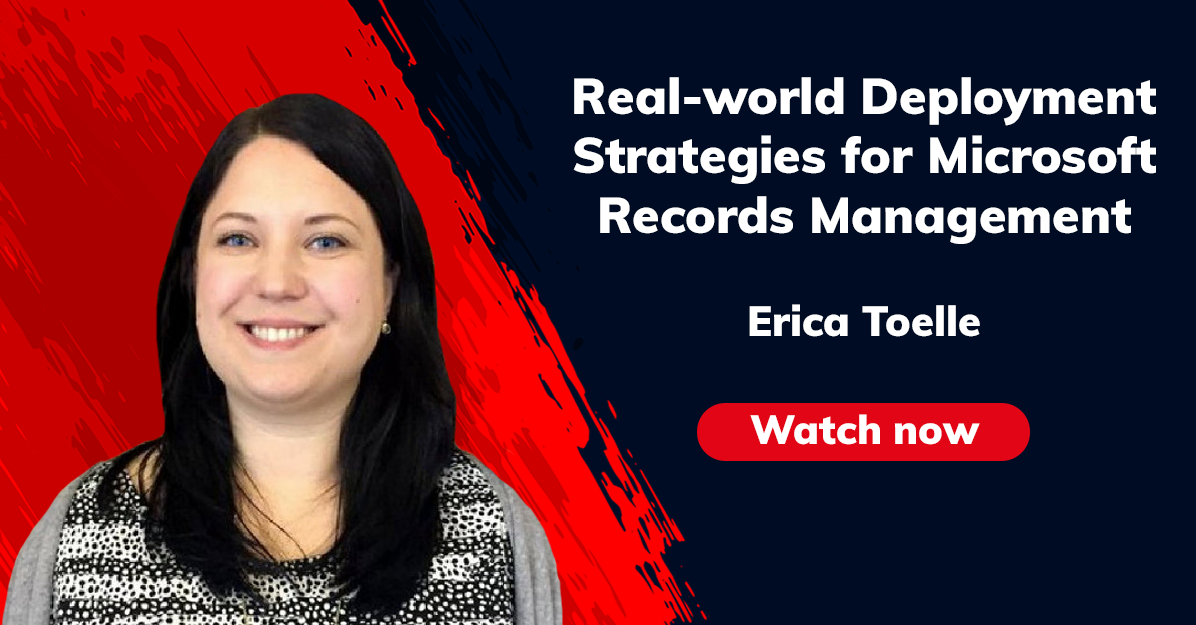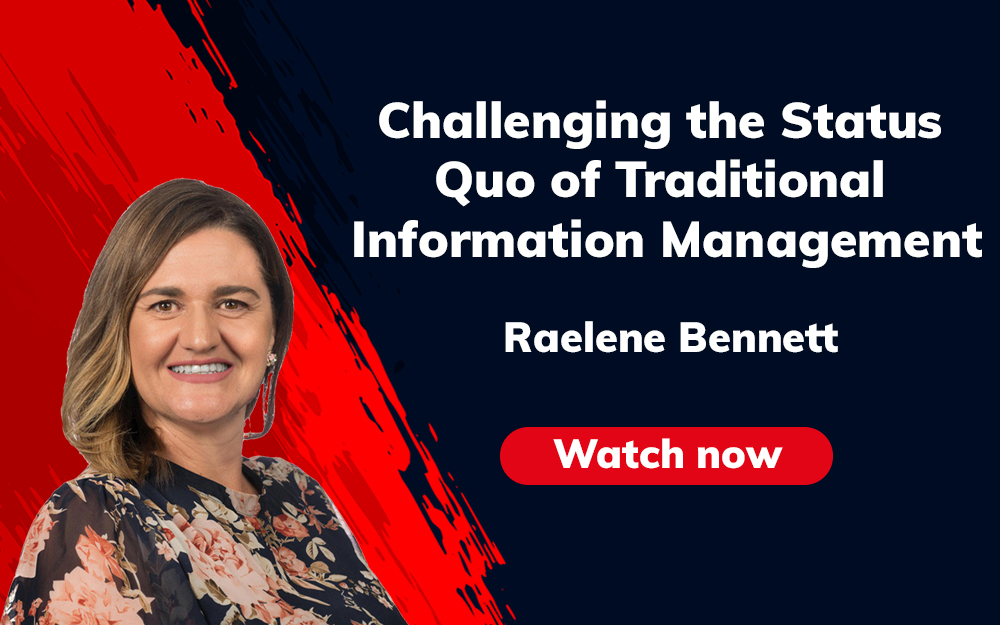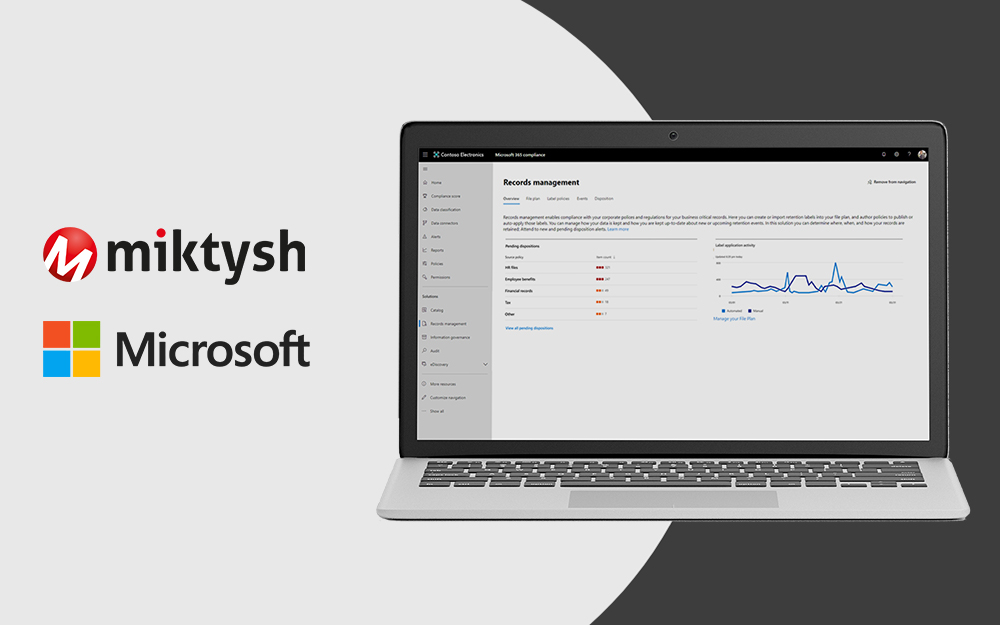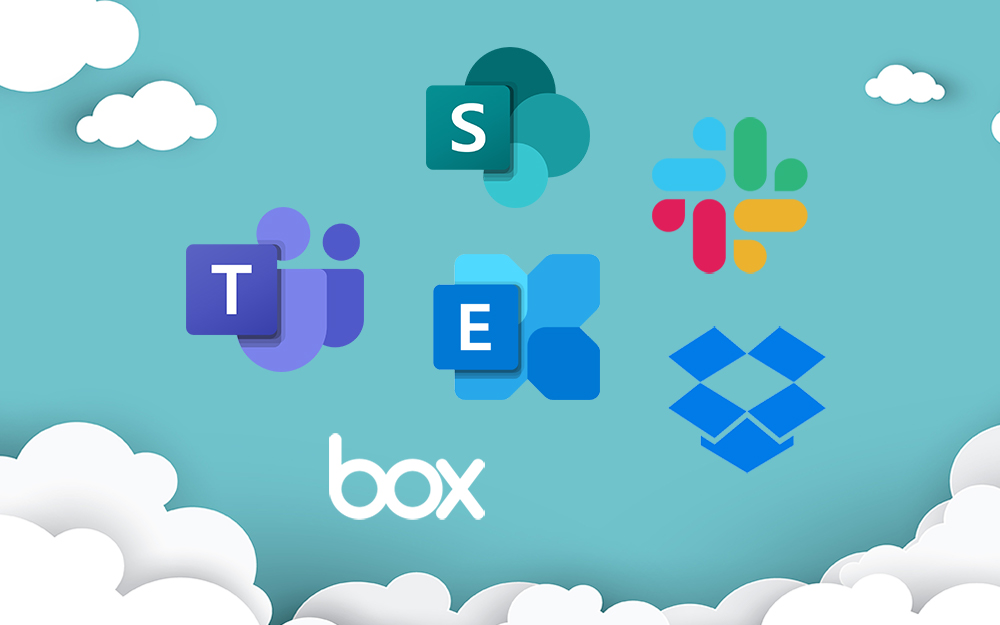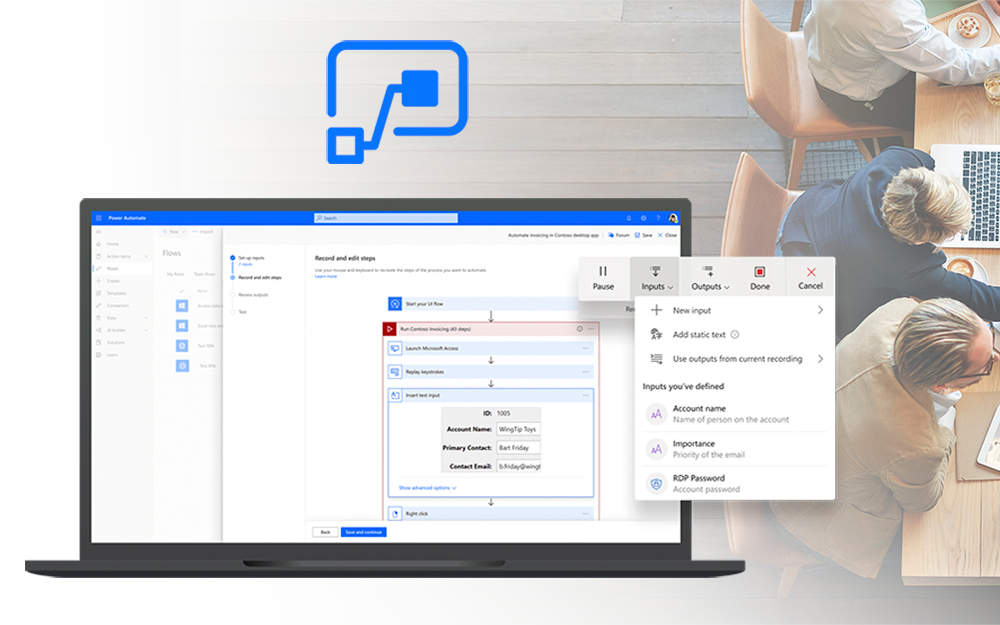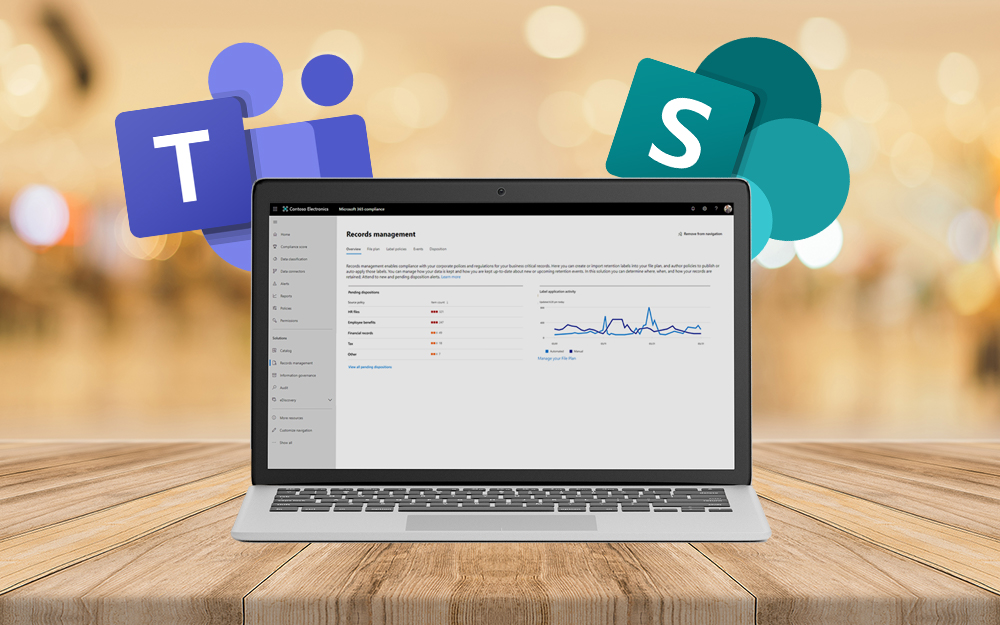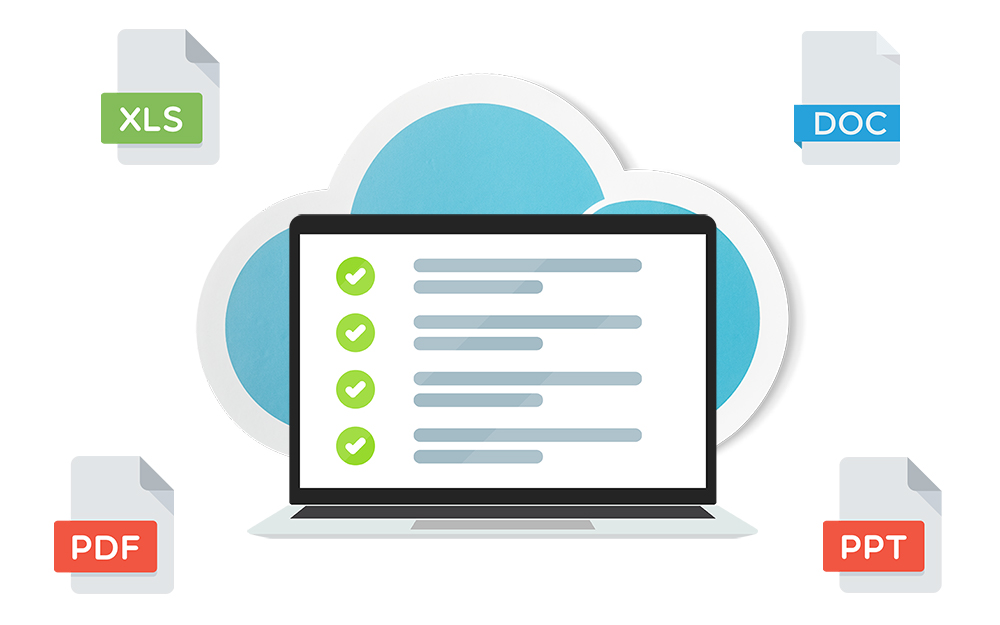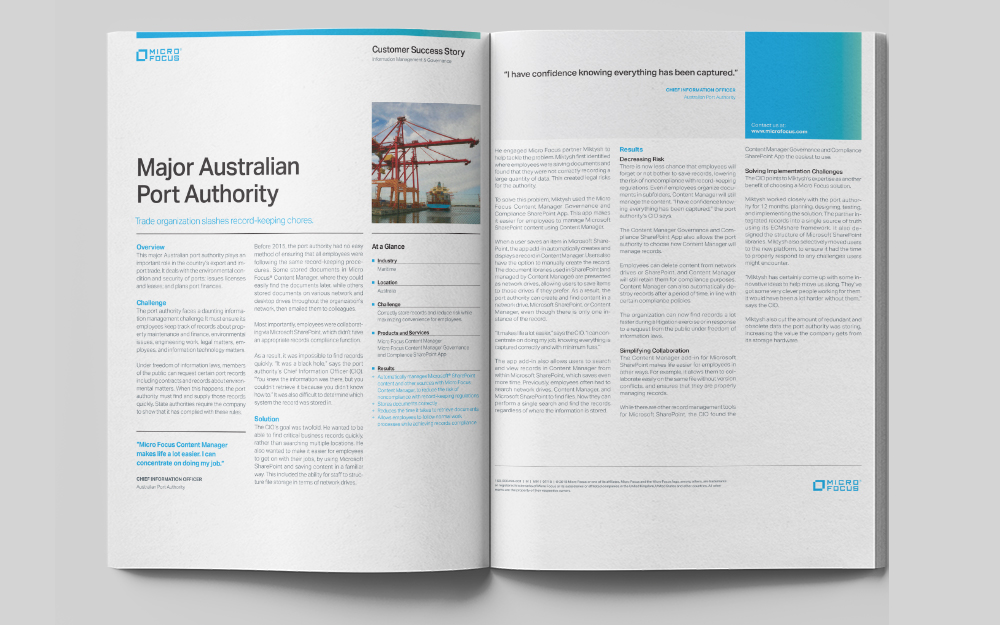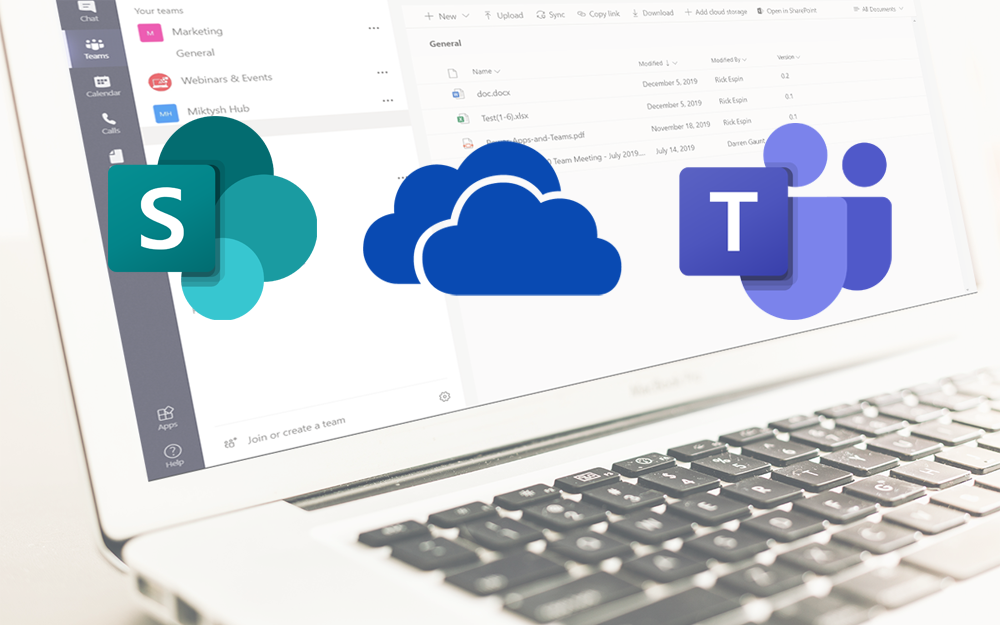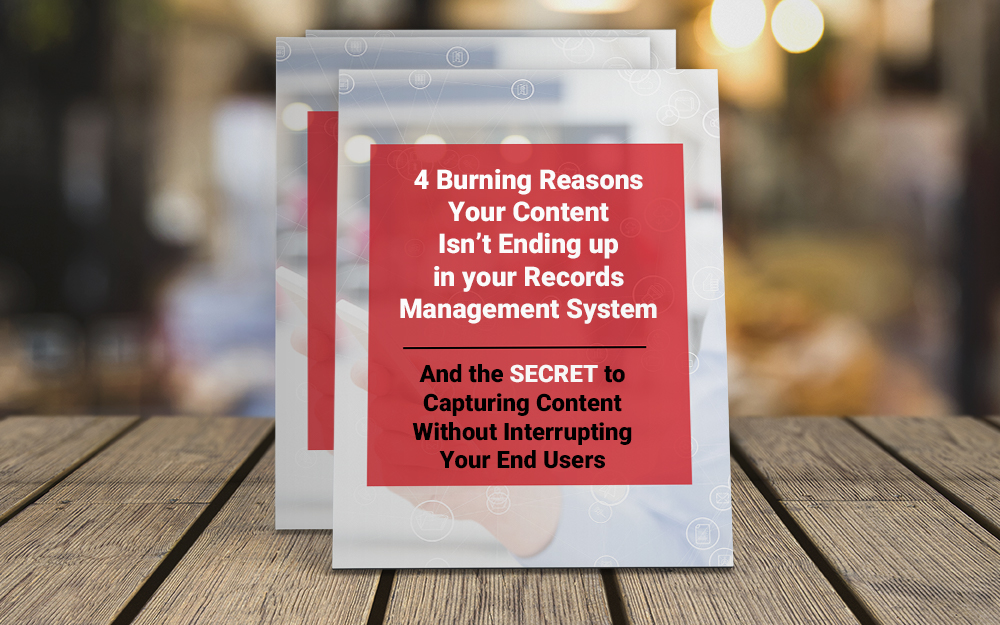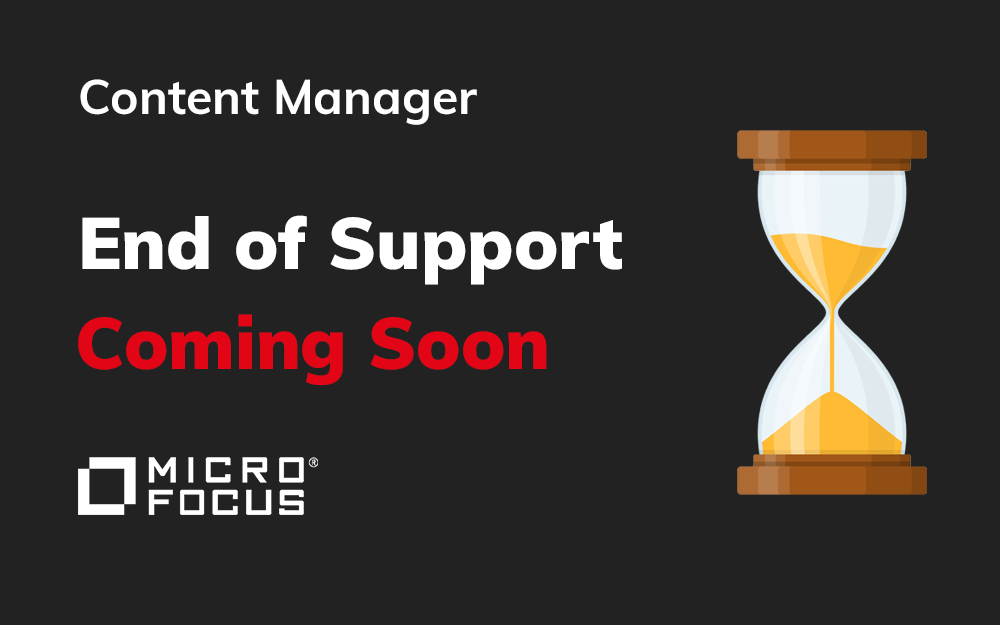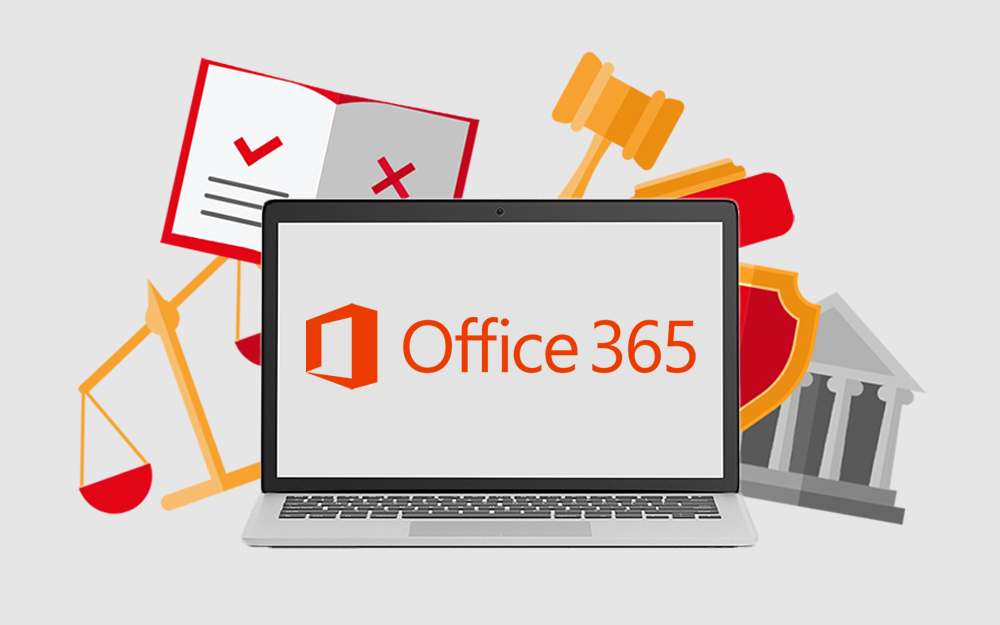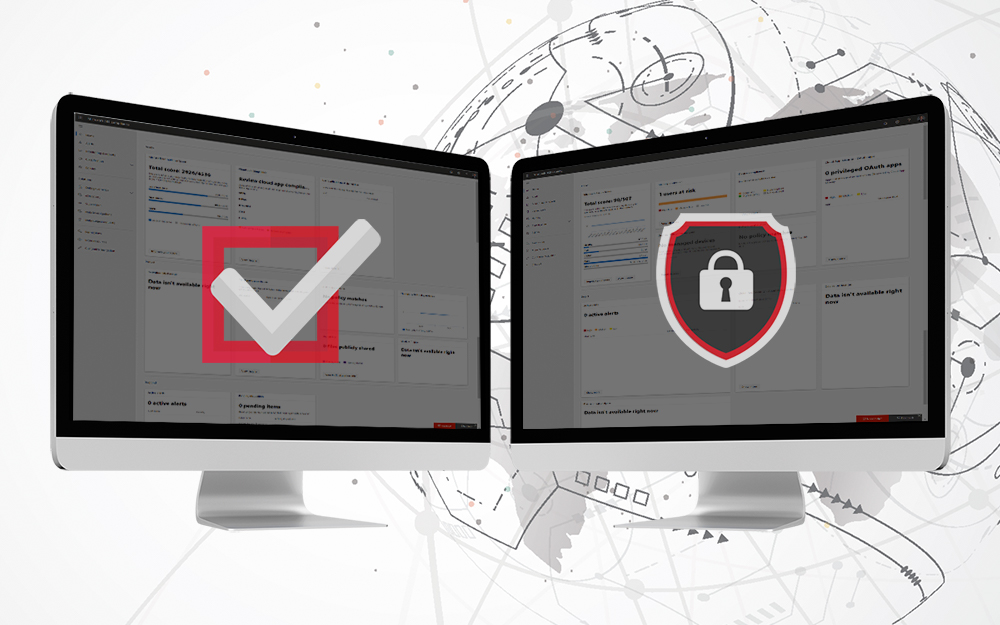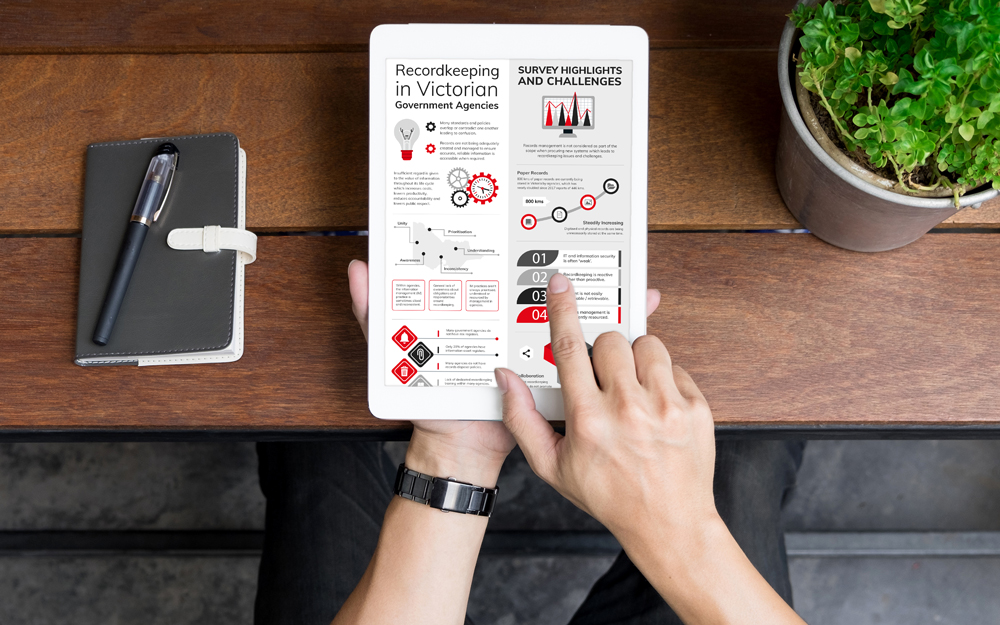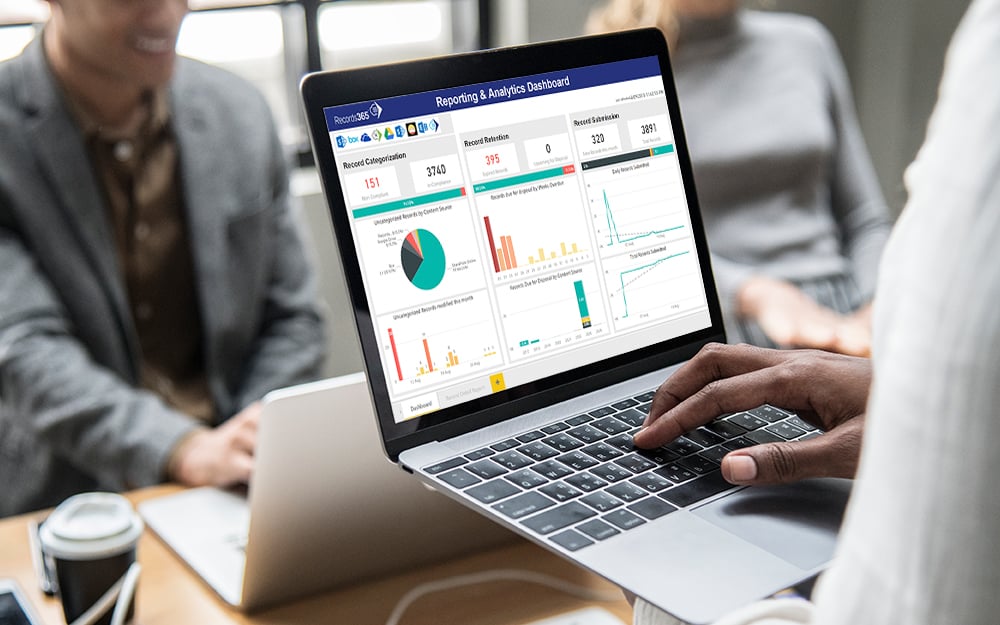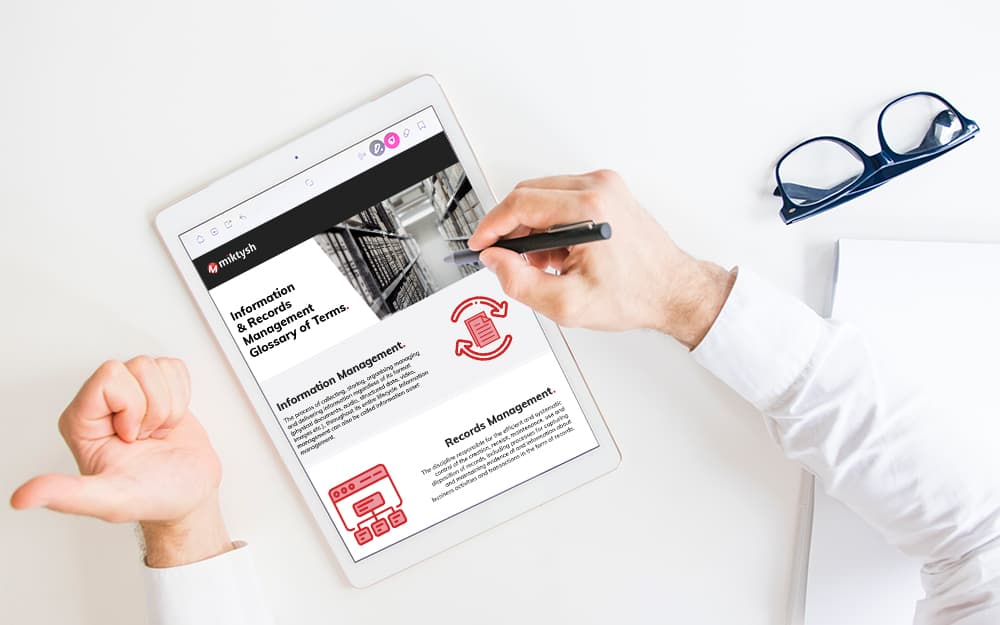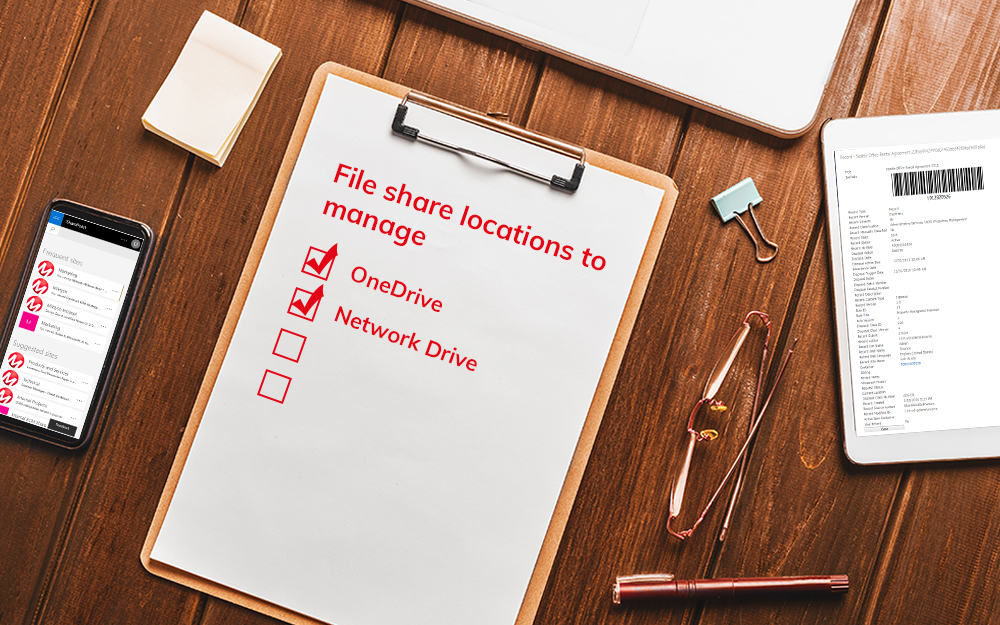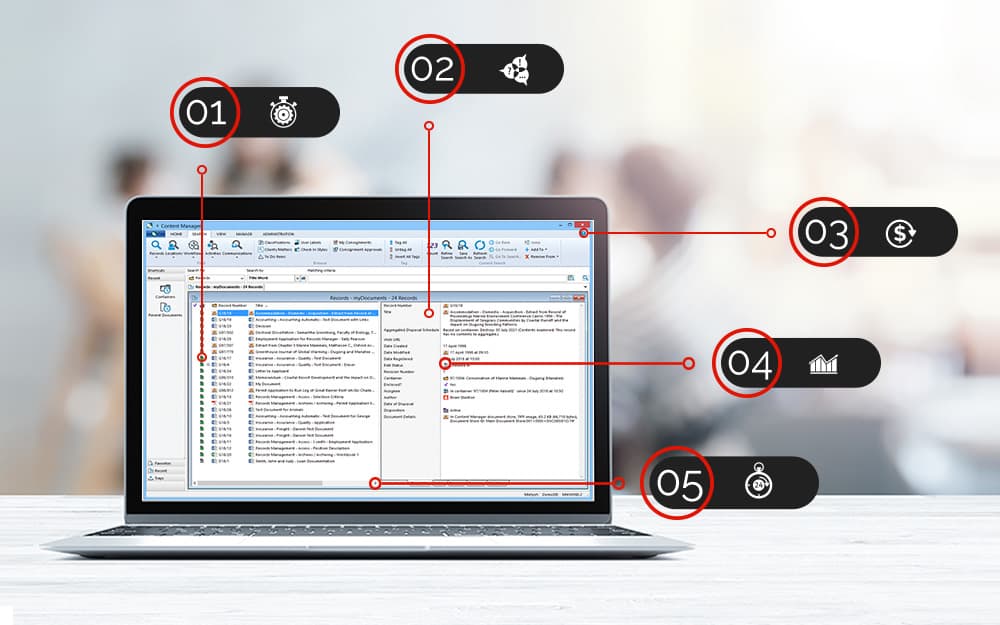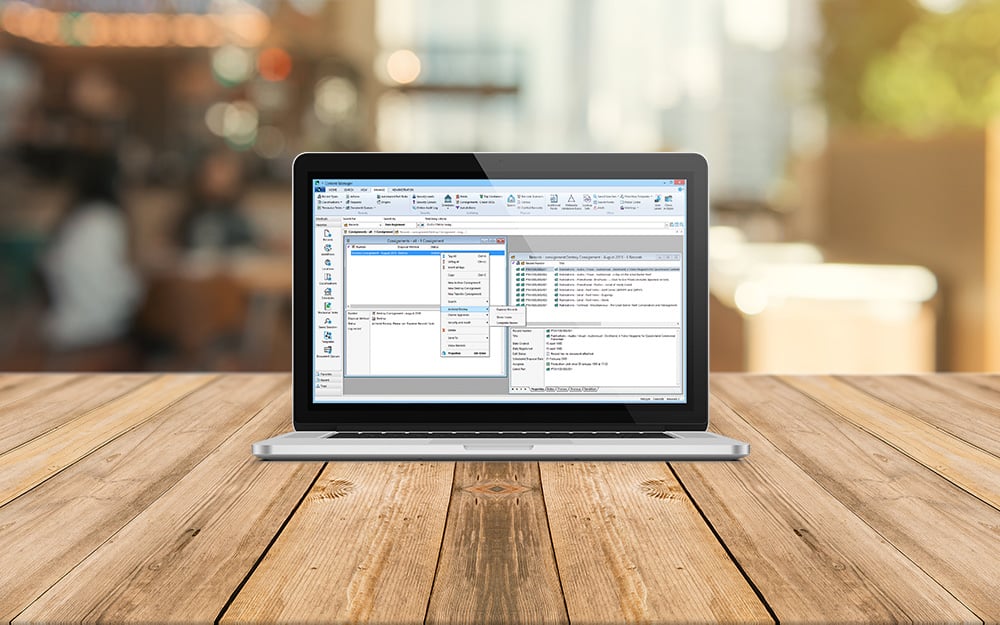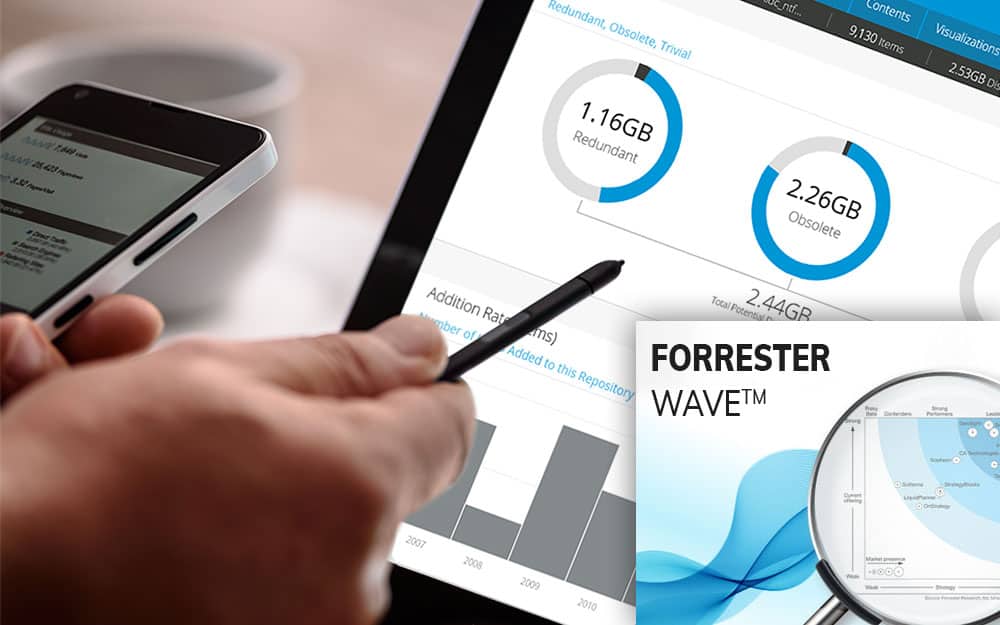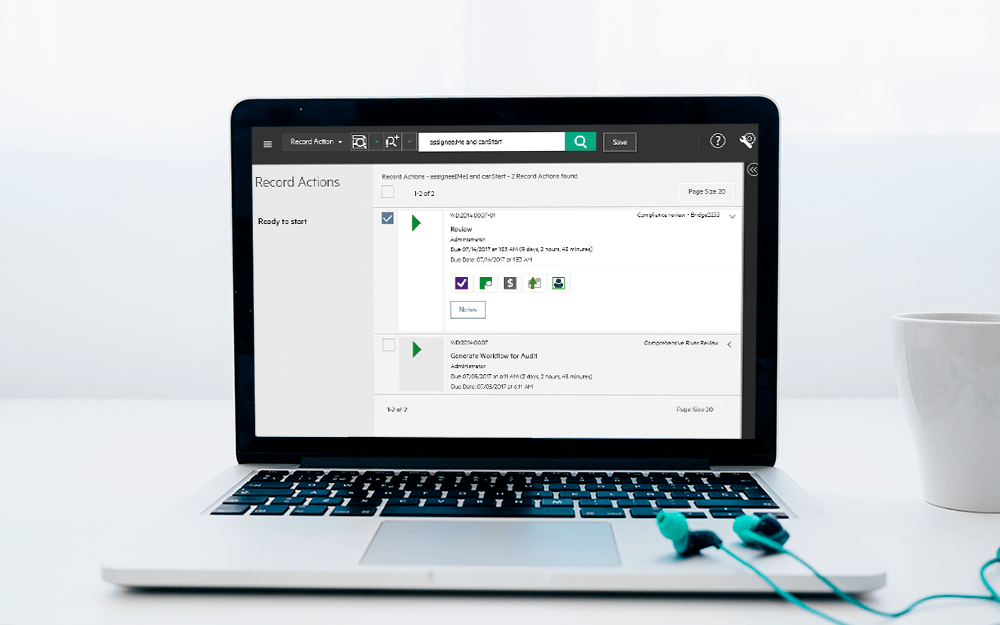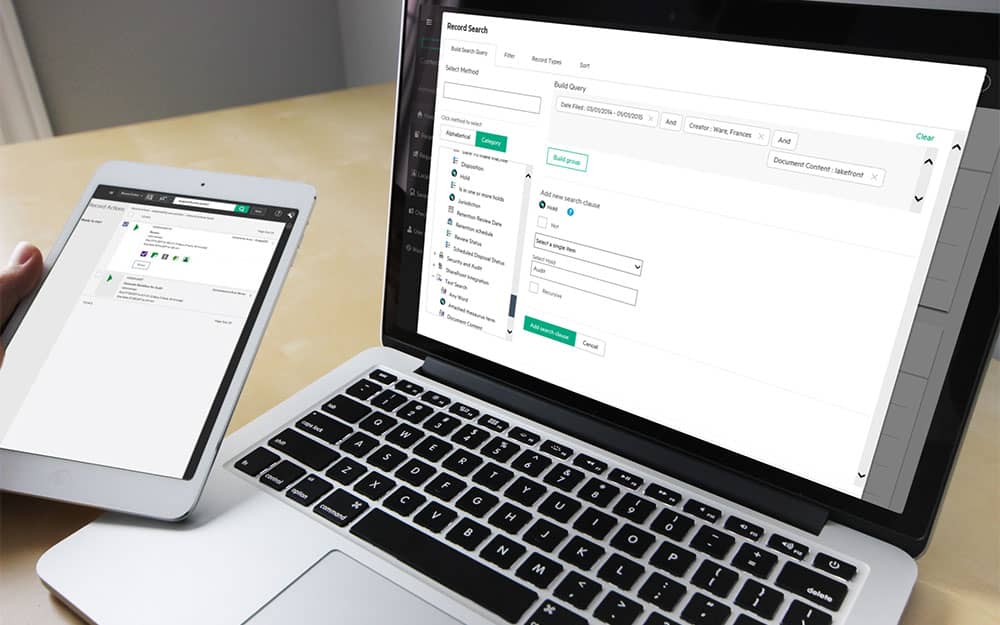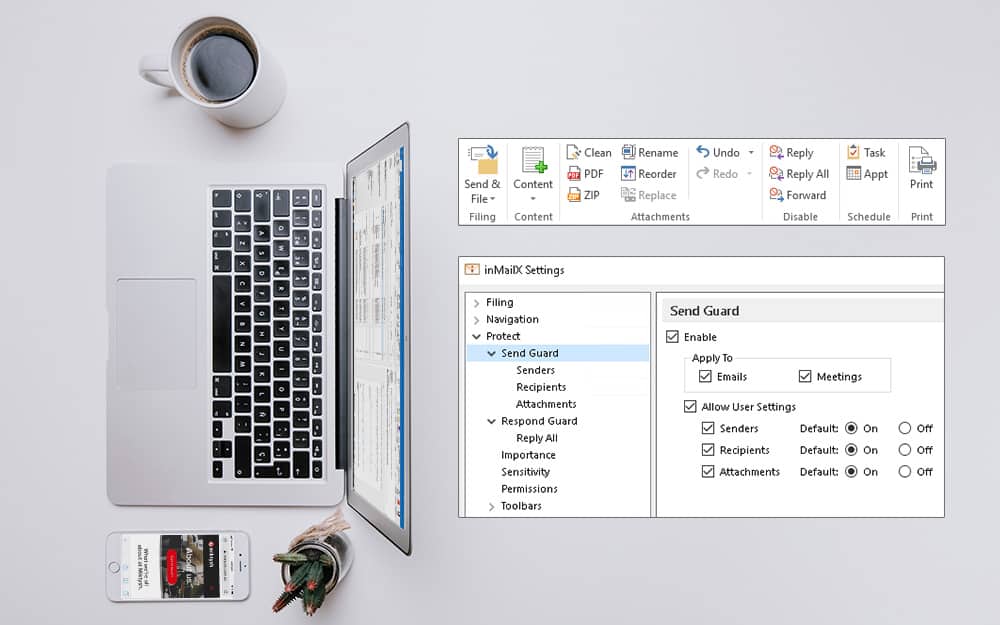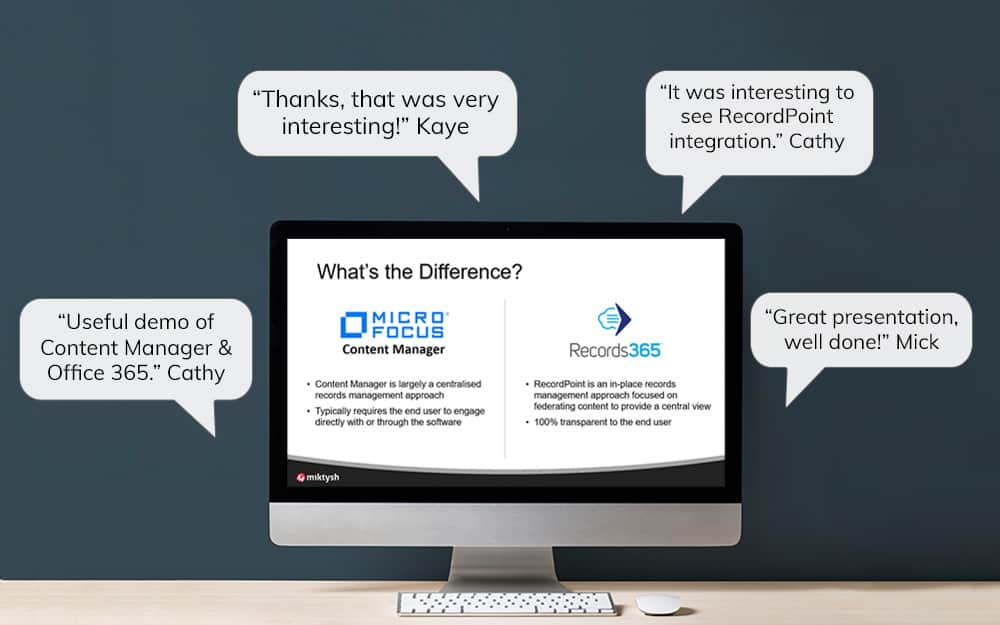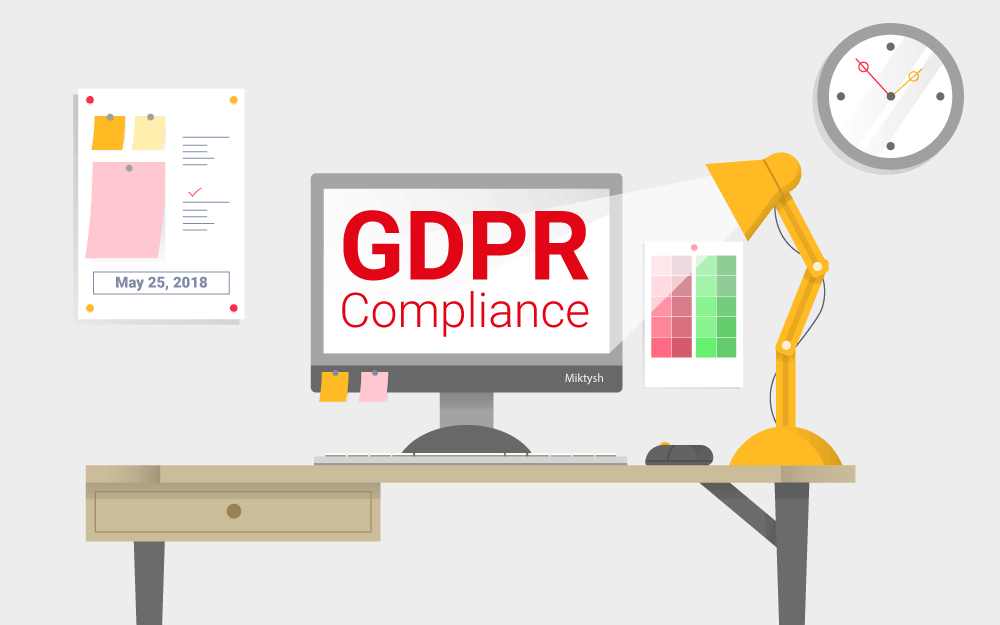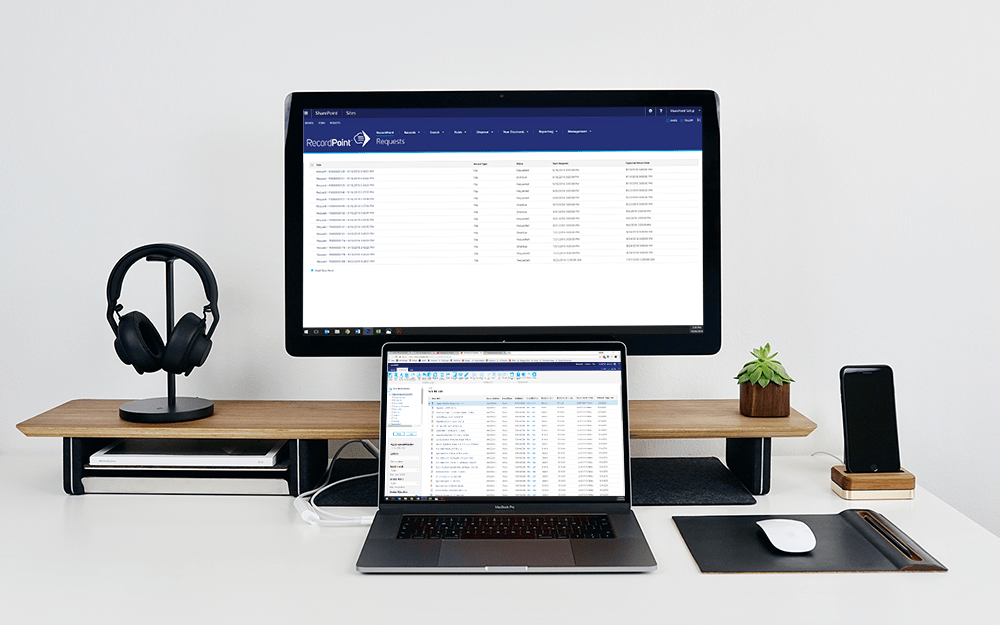Miktysh Blog.
Your go-to source for everything records management, eDRMS, Office 365, TRIM/Content Manager, RecordPoint, AvePoint, and EncompaaS related.
Categories
Topics
How to Approach a Content Manager SharePoint Integration
Jun 19, 2020 | Micro Focus, Office 365, Records Management

Content Manager or TRIM as it was previously known, is still by the far the dominant records management system in Australia, with approximately 80% of the market using it. However, the leading problem which plagues many organisations using Content Manager is a lack of end-user engagement.
It doesn’t matter how advanced or well configured your records management system is, if you do not have end-user engagement you are not going to be capturing important information, which will make you uncompliant.
Why do organisations using Content Manager often suffer from poor engagement? Simply put, end-users do not want to use traditional records management systems. They find them complex and difficult to use. As a result, despite efforts by organisations to invest in change management, end-users will find workarounds from having to work with a system like Content Manager, which often involves storing documents locally in network drives.
Moreover, IT departments are increasingly rolling out SharePoint to provide end-users with an easy-to-use content management system which they can collaborate on. This has been accelerated by recent COVID-19 lockdowns, which has forced organisations to quickly rollout new technologies such as Microsoft Teams to facilitate the need for remote working. For these organisations’ records management is usually an after-thought, which will create significant compliance problems with information not being properly captured.
So, what is the solution? There are many third-party plugins selling integrations between SharePoint and Content Manager, however these are redundant as Content Manager comes with an out-of-the-box integration with SharePoint, which when configured correctly can allow your content to be compliantly managed without your end-users having to interact with Content Manager at all. In fact, although many people aren’t aware of this integration it has existed since TRIM version 7. The early models were plagued with bugs, however from our experience the integrations with Content Manager versions 9.3 and 9.4 have worked effectively.
Considerations when integrating Content Manager with SharePoint
The first thing to consider when looking to integrate these two systems is that they are inherently very different. Content Manager is a rigid system, whereas SharePoint is a flexible, evergreen environment that is constantly evolving. For this reason, it can often feel like mixing oil and water when you first approach this integration.
The first thing you will need to start with is your SharePoint architecture and it imperative that you involve your records team in this process from the get-go. IT persons tend to have a good understanding of SharePoint sites; however, consideration also needs to be given to content types, document libraries, what metadata is required and what information should be captured and where it should be stored.
You will also need to ensure you have effective information governance in place. Additionally, we recommend that your records staff monitor the Microsoft message center to understand what updates and changes are being made to SharePoint and Microsoft 365. As I stated earlier, Content Manager may be a rigid environment that for the most part stays the same, but SharePoint and Microsoft 365 are evergreen environments that are constantly rolling out new updates (often without telling you beforehand). You will need to monitor these updates and determine how your organisation may need to shift in response to them.
Changing regulatory requirements and search functionality
As records management technology changes, so do the regulatory compliance requirements outlined by the National Archives of Australia (NAA) as well as state regulatory bodies. Previously, organisations were required to capture all their documents. This means if you are using Content Manager all your content would need to go into it regardless of its context or importance.
However, with regulatory changes particularly through the NAA and QSA, organisations now have the autonomy to determine what information is important to them and only save that content in Content Manager. This means that the rest of your content can be left in SharePoint if you are using both systems.
From there you can use tools such as the Microsoft 365 Compliance Center to manage your less important information that is stored in SharePoint, while using the integration to manage your valuable information in Content Manager. For example, you might say that anything that needs to be kept for over 15 years will need to be captured by Content Manager while anything under 15 years can remain in SharePoint. Down the track you can then decide if for example a document hasn’t been modified in 6 months to take it out of SharePoint and leave it solely in Content Manager.
When approaching a Content Manager SharePoint integration, SharePoint Enterprise Search is another important feature to be aware of. You can put your Content Manager search functionality into Enterprise Search, which allows you to search and discover your Content Manager documents without leaving SharePoint. Thus, if there is a document in Content Manager that an end-user needs to use it can be exposed back into a SharePoint document library for the end-user, who won’t have to interact with Content Manager at all.
Key Takeaways
For any organisation looking to approach a Content Manager SharePoint integration there are three key takeaways I would leave you with.
- Ensure you have set-up correct architecture and governance of your SharePoint environment before configuring the integration. That doesn’t just include OneDrive, Sites and Teams but also your document libraries, content types and metadata (including term stores). This will make your integration much smoother.
- Always keep the end-user in mind. The integration can allow you to capture the information that is required by legislative standards without interrupting the way your end-users work. You don’t need to have records management compliance dominate how you configure the environment you simply need to know what’s best for your organisation.
- If you don’t have anyone in your organisation with expertise from both a Content Manager and SharePoint perspective, we highly recommend you work with someone that has this. They will need to be able to translate how your records management requirements fit into your SharePoint and Microsoft 365 environment.
If you would to see a demo of how the Content Manager SharePoint integration works you can click here. We also have a case study of an integration we configured for a major Australian port, which you can check out. Finally, if you have any question or want to know more, feel free to reach out to one our integration specialists.

Kylie Lack
Lead Technical & Business Consultant
Kylie is a records and information management specialist with a wealth of industry knowledge. She drives information excellence in eDRMS and ECM software design and implementation. Drawing on her analytical acumen, technical aptitude and expert project management skills, she also employs our proven methodologies and industry best practices to deliver valuable insight and support for our clients.
Categories
Topics
Follow us on social
Popular content.

Analytics Driven Information Governance
14.07.2021
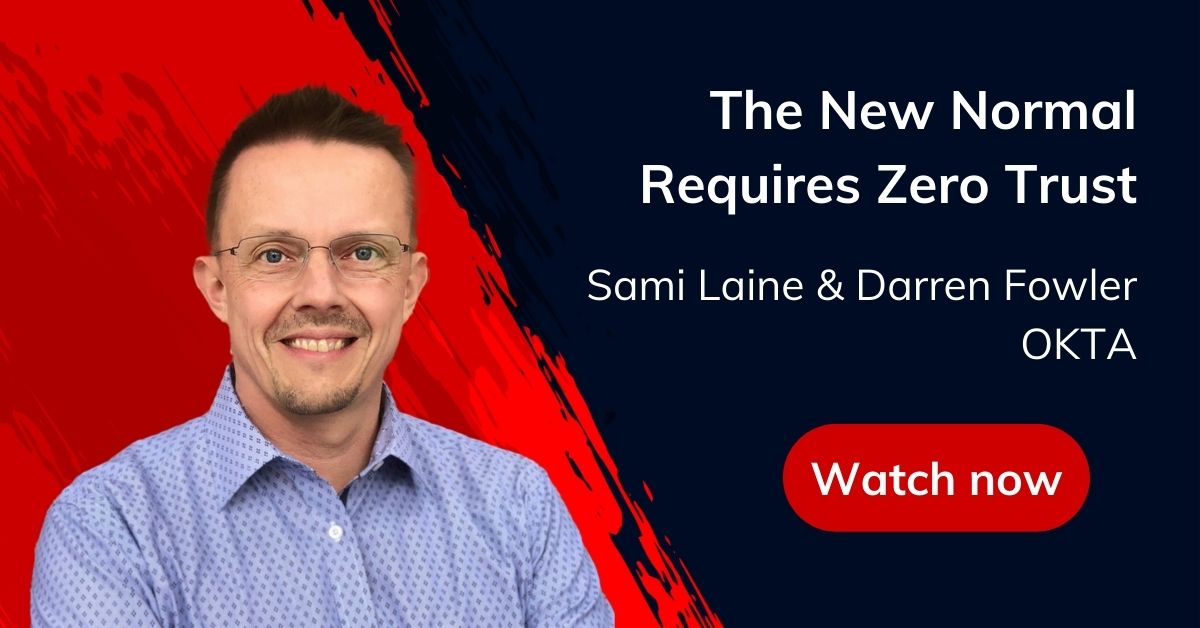
The New Normal Requires Zero Trust
27.06.2021
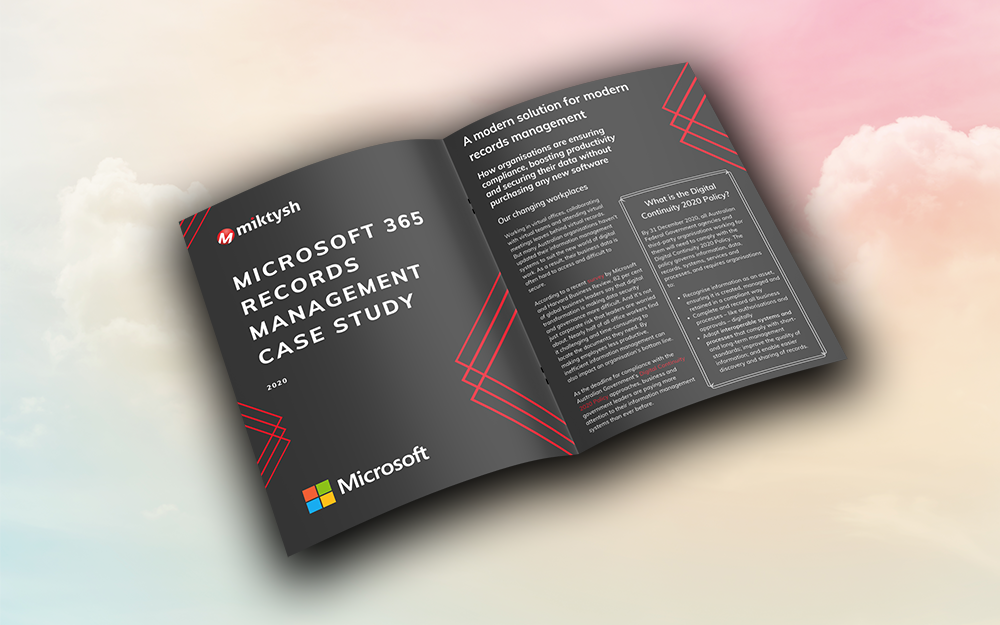
Microsoft 365 Records Management Whitepaper
06.11.2020

Micro Focus Launches Content Manager Select
28.05.2020
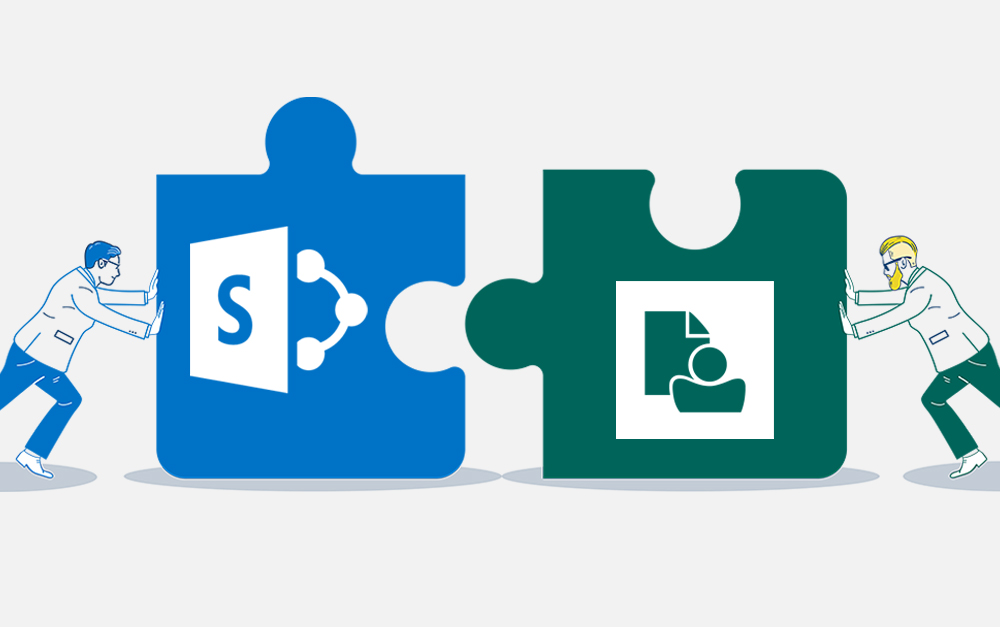
Content Manager SharePoint Integration Demo
20.05.2020

Top 7 Hidden Features in Microsoft Teams
11.02.2020
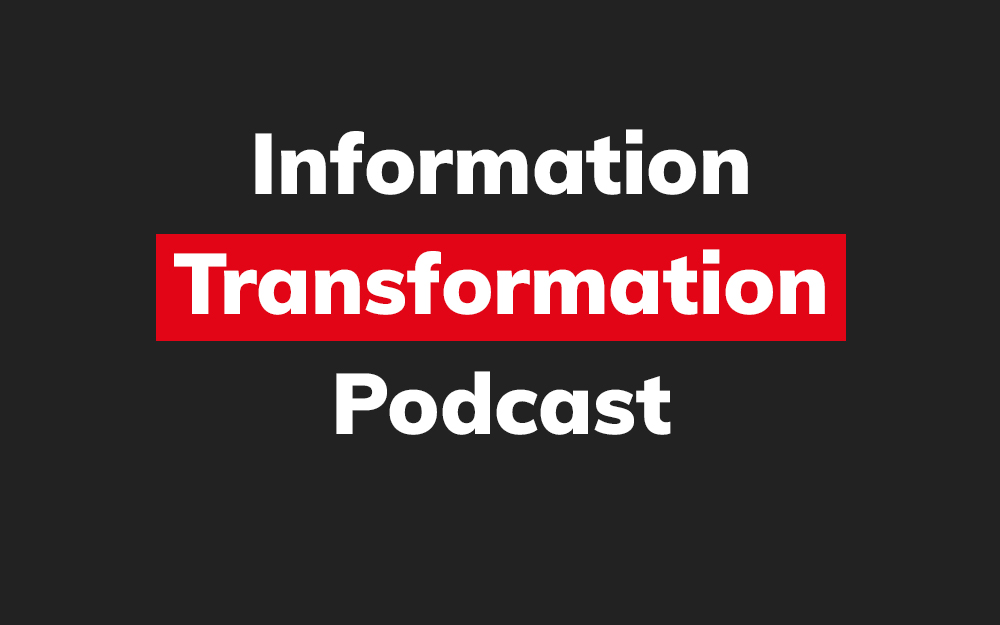
Integrate Content Manager with SharePoint
15.01.2020

Information Management Strategy Example
06.12.2019

How to Approach a Digital Transformation
13.11.2019
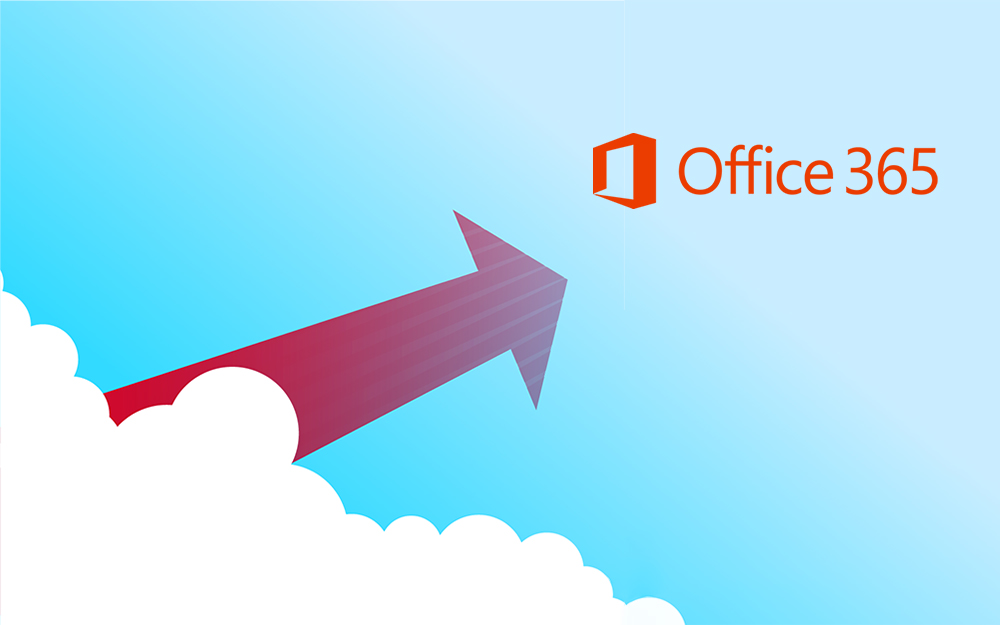
Top 5 Benefits of Migrating to Office 365
10.10.2019
Content Manager 9.4 Web Client
19.09.2019

Content Manager 9.4 Sneak Peek – Video Demo
02.09.2019

What Version of SharePoint is on Office 365?
27.06.2019
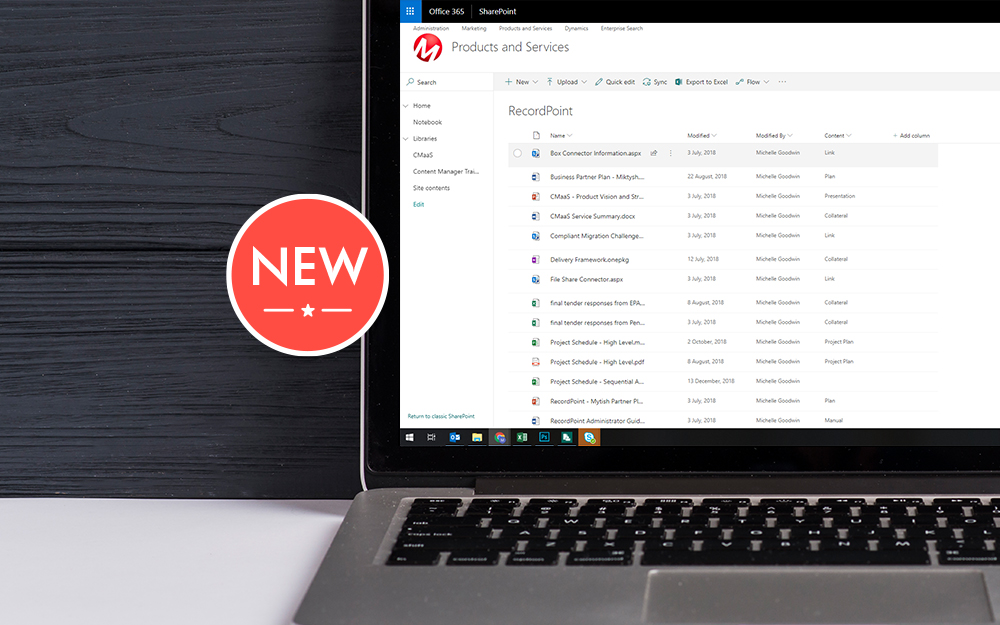
New SharePoint 2019 Features
08.03.2019

Data Migration Validation Best Practices
08.02.2019

Cloud Governance – RIMPA Queensland Event
27.09.2018

RecordPoint Records365 Demo
09.05.2018

How RecordPoint Enhances Office 365
09.05.2018

6 GDPR Tools to Assist with GDPR Compliance
17.04.2018

Analytics Driven Information Governance
14.07.2021

The New Normal Requires Zero Trust
27.06.2021

Microsoft 365 Records Management Whitepaper
06.11.2020

Micro Focus Launches Content Manager Select
28.05.2020

Content Manager SharePoint Integration Demo
20.05.2020

Top 7 Hidden Features in Microsoft Teams
11.02.2020

Integrate Content Manager with SharePoint
15.01.2020

Information Management Strategy Example
06.12.2019

How to Approach a Digital Transformation
13.11.2019

Top 5 Benefits of Migrating to Office 365
10.10.2019
Content Manager 9.4 Web Client
19.09.2019

Content Manager 9.4 Sneak Peek – Video Demo
02.09.2019

What Version of SharePoint is on Office 365?
27.06.2019

New SharePoint 2019 Features
08.03.2019

Data Migration Validation Best Practices
08.02.2019

Cloud Governance – RIMPA Queensland Event
27.09.2018

RecordPoint Records365 Demo
09.05.2018

How RecordPoint Enhances Office 365
09.05.2018

6 GDPR Tools to Assist with GDPR Compliance
17.04.2018
